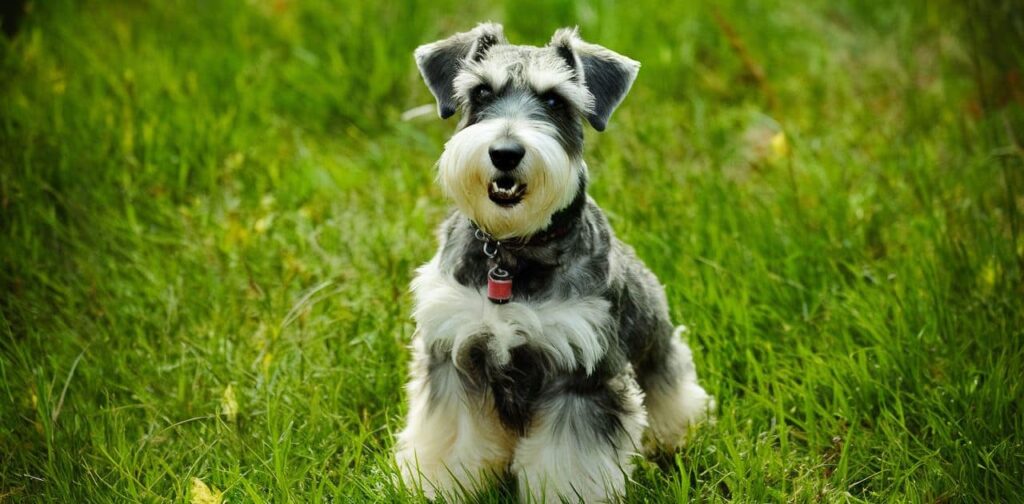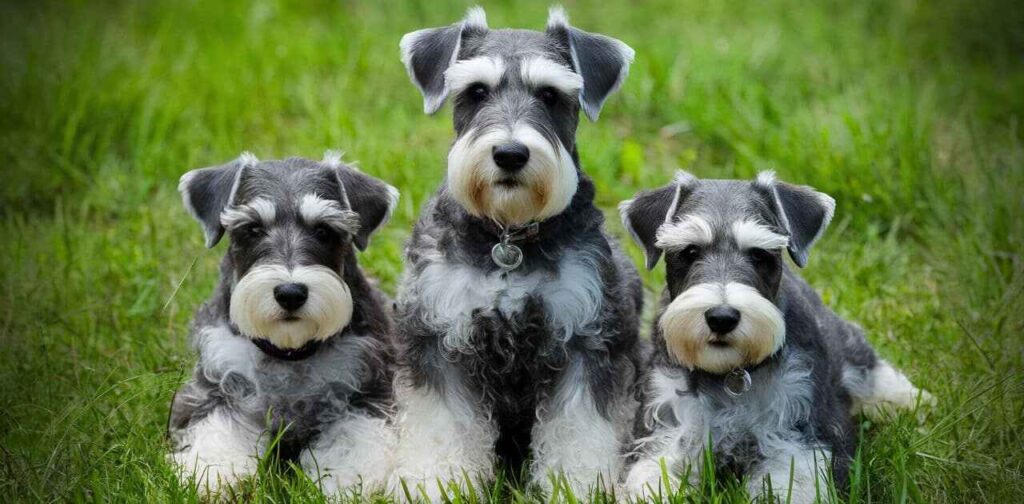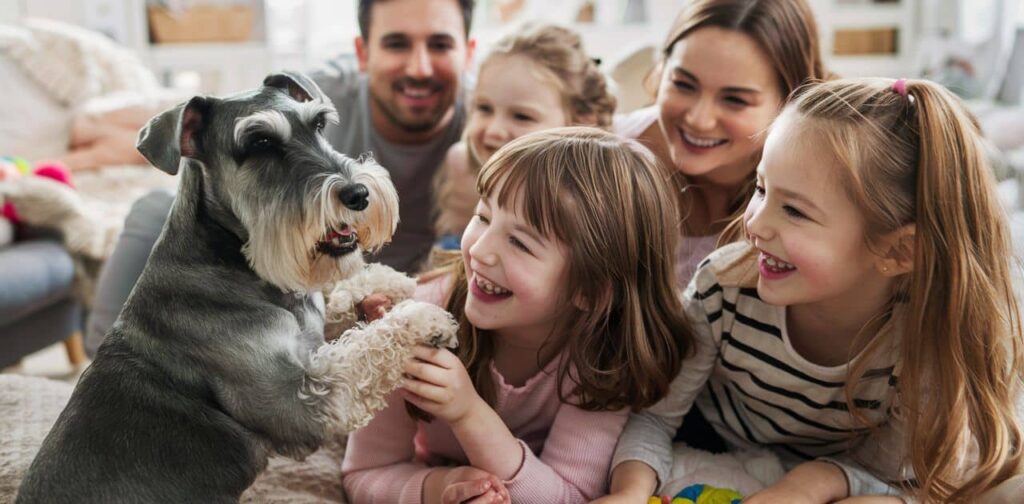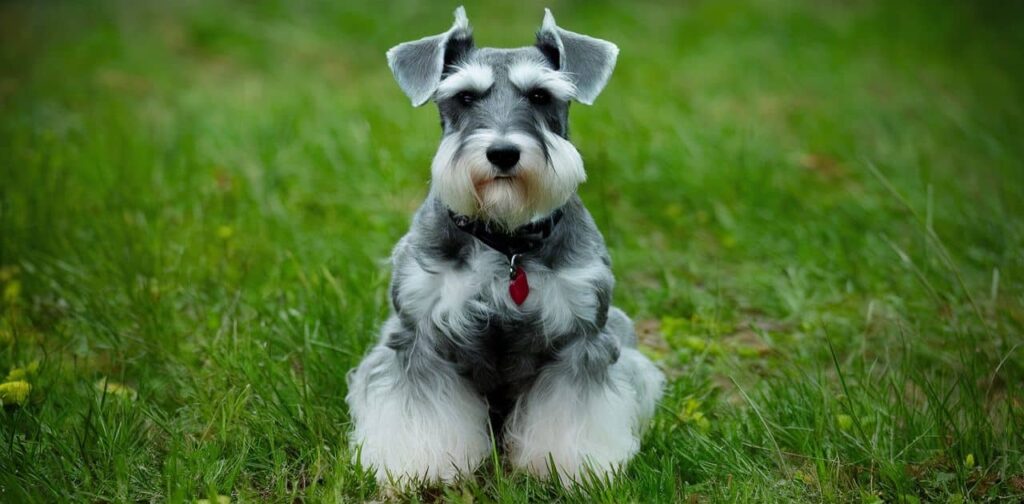Whoa, that title packs a punch! But don’t worry, we’re not about to trash one of America’s most beloved dog breeds.
The truth? Schnauzers aren’t the worst at all. They’re affectionate, smart, and make fantastic family companions when their needs are met.
But like any pup, Schnauzers come with their quirks. And some owners might see these as downsides rather than endearing traits.
So let’s address the elephant in the room the 20 reasons some folks believe Schnauzers are the worst. We’ll look at both sides and settle this ruff debate once and for all! Ready to dig in? Let’s start with what many call Schnauzers’ biggest flaw.
Why Schnauzers Are the Worst Dogs? Reasons
First, of all Schnauzers are not the worst dogs. Here are the reasons you should know about that Schnauzers are not the worst dogs but not applying these reasons helps you Schnauzers worst dogs.
- They shed very little hair, which may not appeal to those who like shedding dogs
- Their grooming needs are quite high with regular brushing, stripping, and professional grooming required
- Schnauzers can be excessive barkers if not properly trained, disturbing neighbors
- They have a very high prey drive that may not suit homes with small pets like cats, rabbits, etc.
- Schnauzers require a firm, consistent owner as they can be stubborn and difficult to train at times
- Their confidence and territorial nature can come across as aggression if not socialized properly
- Schnauzers need a considerable amount of physical and mental exercise to avoid destructive behaviors
- Their iconic “bearded” look may not appeal to everyone’s aesthetic preferences
- They are prone to certain health issues like pancreatitis, bladder stones, and myotonia congenita
- Schnauzers can be very energetic and may overwhelm owners wanting a more laidback companion
- Their tendency to chase smaller animals makes them unsuitable for households with rodent pets
- Their double coats can lead to heavy seasonal shedding periods if not consistently groomed
- Schnauzers require early socialization from puppyhood which can be challenging for new owners
- Their alertness as watchdogs means excessive barking at every sound if not trained properly
- Schnauzers have a high risk for obesity if their diet and exercise aren’t carefully monitored
- They are not hypoallergenic contrary to popular belief, just lower shedding than many breeds
- Reputable Schnauzer breeders can be difficult to find, increasing chances of irresponsible breeding
- Their bold personalities and high energy may make them too rowdy for homes with elderly owners.
- Schnauzers can be destructive chewers when bored or not provided enough mental stimulation.
- Their grooming costs from professional stripping can add up over the course of their lifetime
Misconception 1: Schnauzers Are Aggressive Guard Dogs

We’ve all seen those tough-looking Schnauzer mugshots. The bristly beard, arched brows, and cropped ears can seem pretty intimidating. And their ancestors did guard farms and homes back in the day. So it’s no wonder some assume Schnauzers are hotheaded security dogs, ready to attack any stranger in sight.
But here’s the truth: With proper socialization and training, Schnauzers are no more aggressive than any other breed. In fact, the American Temperament Test Society rated 82% of Miniature Schnauzers as good family guardians and companions. That puts them above breeds like Chihuahuas and Pomeranians in how well they get along with people.
Sure, Schnauzers can bark up a storm if an intruder shows up. But that territorial instinct doesn’t make them inherently mean or snappy. They’re just doing their watchdog duties.
As pet parents, it’s on us to expose our Schnauzers to new people and pooches from an early age. That way, they learn what’s normal and what poses an actual threat.
Misconception 2: Schnauzers Are Impossibly Noisy Barkers

Speaking of that notorious Schnauzer bark it’s a common gripe among owners and neighbors. After all, these pups descend from ratters and farm guardians. So they’ve got some lungs.
You might hear that infamous “yap yap yap” at everything from a squirrel in the yard to the mailman’s daily visit. Kids playing outside? Bark! Dinnertime? Bark bark! It can get old fast, especially in apartments or houses with thin walls.
But here’s the good news: With patient training and exercise, you can tame that big bark. In the right environment with an owner who understands their roots, Schnauzers don’t have to be constant loud-mouths.
The key is giving these watchdogs a clear “Quiet” command from day one. And reward them with treats when they shush after alerting you to something. Over time, a smart little Schnauzer will learn to give you a “woof” or two before shutting their trap.
You can also keep them busy with food puzzles and rotate toys to curb boredom barking. And never yell or punish when they vocalize – that’ll only reinforce the habit.
Think positive reinforcement is a pain? Ask Shawn, who finally got his Schnauzer pup to be silent as a mouse:
“At first, Monty’s barking drove us nuts. It was like having a cranky old neighbor complaining about every little noise. But after staying consistent with training, now he just gives a little “woof woof” and goes back to napping when the mailman arrives.“
See, it’s totally possible to hush a Schnauzer’s howlers without losing their guarding instincts.
Grooming Needs – The Iconic Schnauzer Look Requires Effort
While we’re on the subject of grooming pet peeves, here’s another “con” for Schnauzers: Their iconic bearded look requires quite a bit of upkeep.
You see, these funky furballs rock not just one, but two coats:
- A dense, soft undercoat for insulation
- A harsh, wiry outer coat to protect against the elements
Together, they create that trademark Schnauzer facial hair, along with their stripey leg fur and rectangular “fall.“
It’s a cool aesthetic, but you’ll need to put in the effort to prevent matting and keep it looking fresh.
That means:
- Brushing their coat 2-3 times per week with a slicker brush
- Getting a professional “stripping” every 6-8 weeks to thin out the old fur
- Bathing every 4-6 weeks with a quality dog shampoo
The payoff? You get a Schnauzer who’s mat-free, doesn’t stink, and sports that classic “mustache.”
Plus, that wiry outer coat prevents excess shedding around your home. So while Schnauzers aren’t 100% hypoallergenic, they’re one of the better options for allergy sufferers. Psst. You can even try out a “puppy cut” to reduce the grooming burden if that facial fur and stripping seems like too much work.
Misconception 3: Schnauzers Don’t Get Along With Kids or Other Pets

Here’s a common concern won’t a Schnauzer’s super-high prey drive spell disaster for households with kids or other furry friends? These dogs did spend generations hunting rats, mice, and other vermin on farms after all. And as we just covered, they tend to have confident, sometimes stubborn personalities.
So it’d make sense if Schnauzers saw Fluffy the cat or an inquisitive toddler as prey to chase down.
The good news? It all comes down to socialization, the key to any well-behaved dog.
With early, positive introductions to children and animals from puppyhood, Schnauzers can become wonderful family dogs.
It helps that their hunting instincts are less intense in Miniature Schnauzers compared to the larger Standard and Giant breeds. But even then, training and exposure helps them learn to coexist calmly.
Just ask Angie, who rescued her beloved Coco when she already had a house full of pets:
“I was worried having a Schnauzer with two cats and a small dog would be World War Furry. But by supervising their interactions, doing treat rewards, and giving Coco her own space when needed, she quickly learned to coexist. Now she’s a little sister to my other animals and loves cuddling with the kids too.”
So fear not as long as you socialize from an early age, Schnauzers can absolutely be amazing family dogs! Their confidence and courage just means taking extra care during introductions. I know you are a pet lover and have come here to learn about Schnauzer dogs, but we can also discuss in our next post about Shih Tzu dogs. Are Shih Tzu dogs the worst or not? Let’s explore and enjoy it together.
Misconception 4: Schnauzers Are Nightmare Dogs to Train

With all that stubbornness and attitude, you might assume Schnauzers flunk out of obedience school before they even enroll. Surely those bristly brows and fearless genes mean they won’t listen to commands. right?
Not quite Schnauzers are just as smart as any other breed, maybe even more so. In fact, the American Kennel Club rates them as the 12th most intelligent dogs in their rankings.
These dogs have the smarts and eagerness to excel at obedience, agility, and other activities when trained properly. The AKC even refers to Schnauzers as “bright and energetic little dogs.”
That said, training them does require a little more effort and consistency compared to some other companion breeds. See, Schnauzers were originally bred to think independently while hunting vermin and protecting farms. That stubborn streak means they can be easily distracted. But use positive reinforcement methods and you’ll bring out the best in them.
Pat Miller, a leading dog trainer, swears by these techniques:
“The key is keeping sessions short, rewarding often with favorite treats, and never resorting to punishment or harsh methods – Schnauzers just tune those out. I’ve had amazing results using marker training, where you mark the exact behavior you want before treating.”
With that combined intelligence and reward-driven focus, Schnauzers can become stars at dog sports. Just look at all the Schnauzer competitors winning agility and obedience tournaments.
So while they may test your patience at times, Schnauzers definitely aren’t undisciplined little monsters. It’s all about understanding their nature and using motivational, modern training techniques.
Health Considerations for Responsible Schnauzer Owners
Like any purebred, Schnauzers are predisposed to certain health conditions that responsible owners should be aware of.
One of the biggest concerns is a genetic neuromuscular disease called myotonia congenita. This causes issues like weakness, stiff muscles, and in severe cases, the inability to control muscle movements. It usually appears in puppyhood.
While not all Schnauzers will develop this condition, it’s crucial to find a reputable breeder who screens for myotonia and other issues. Puppy mills and backyard breeders are much more likely to produce affected litters.
Other potential health problems include:
- Pancreatitis
- Bladder stones
- Cushing’s disease
- Eye conditions like cataracts or PRA
The good news? You can prevent or manage many of these issues with proper care. For example:
- Feed a high-quality, low-fat diet to avoid pancreatitis flare-ups
- Give plenty of opportunities to relieve themselves frequently to prevent bladder stones
- Stay on top of annual vet checkups to catch issues early
Misconception 5: Schnauzers are not good with children or other pets
Some people think Schnauzers do not like kids and other pets very much. But this is not true. Schnauzers were first bred on farms to catch mice and rats. This strong desire to catch small animals is still there in Schnauzers today. However, with the right training and watching over them, Schnauzers can be great friends with kids and live nicely with other pets.
How to Train a Schnauzer?
Teaching a Schnauzer, or any dog, takes hard work, being nice, and patience.
- Start by teaching your Schnauzer simple commands like “sit,” “stay,” “down,” and “come.” Schnauzers do well when you reward good behavior. Use treats, praise, and other rewards when training to make your dog want to listen.
- Being consistent is important when training a dog. Use the same words and signals every time, and have a regular training routine. Keep training sessions short but do them often to keep your Schnauzer interested. Be patient, as it can take time for your dog to learn new things.
- Get your Schnauzer used to different people, animals, and places when they are young. This will help them feel calm and friendly, not scared or mean, in new situations.
- If your Schnauzer does bad things like jumping, barking too much, or pulling the leash, fix these with nice training. For example, if they jump on people, teach them to sit instead and reward sitting calmly. Get them to do good things instead of bad.
If you are a new dog owner or struggle with training, you can take obedience classes or get help from a professional dog trainer.
How many puppies do Schnauzers have?

One important consideration for prospective Schnauzer owners is understanding the typical litter sizes for this breed. On average, Standard Schnauzers tend to have litters of 6-8 puppies, while the larger Giant Schnauzers usually have 5-7 pups in a litter.
Litter sizes can vary though, as several factors come into play like the mother’s age, overall health, and even the experience of the breeder. It’s not uncommon for a particularly small or large litter size outside those average ranges.
How many puppies do Mini Schnauzers have?
If you have your heart set on the popular Miniature Schnauzer variety, you can expect relatively smaller litter sizes compared to their bigger cousins. Most reputable breeders report Miniature Schnauzer litters ranging from 3-6 puppies on average.
With their petite size, having more than 5 or 6 puppies can put a lot of strain on the mother Miniature Schnauzer during pregnancy and delivery. Responsible breeders closely monitor litter numbers to protect both the dam and puppies’ wellbeing.
When do Miniature Schnauzers stop growing?
Another frequently asked question for Miniature Schnauzer owners is when these lively little pups reach their full adult size. Like many smaller breeds, Miniature Schnauzers hit their maximum height relatively quickly usually between 10-12 months old.
However, they continue filling out their overall body, bulking up with muscle tone and weight until they’re around 12-18 months in age. So while your Mini Schnauzer’s vertical growth may plateau at a year old, you’ll notice them broadening and looking more sturdy over the following months.
Most Miniature Schnauzers reach their full size by 18 months old. At that point, the tiny furball you brought home has blossomed into a confident, fully-grown companion weighing between 12-20 lbs.
By understanding these litter size norms and growth patterns, prospective Schnauzer owners can prepare accordingly. Whether choosing between size varieties or planning ahead for their pup’s developmental needs, this knowledge helps set up both owner and dog for success.
Should I Get a Schnauzer As a Pet?
You are asking if a Schnauzer is a good dog for you. Like all dogs, Schnauzers have good points and bad points. This article can help you understand Schnauzers better and know how to train and care for them properly.
If you have enough money and space like a farm or big yard, and want a friendly watchdog for your family, then a Schnauzer could be the perfect pet for you.
The first Schnauzers were the same size as today’s standard Schnauzers. They were bred to catch rats and guard property. Their natural alertness can also help them guard your yard well.
Why Schnauzers Actually Make Awesome Family Dogs

First off, Schnauzers have endless energy and are always up for fun. Their lively, inquisitive personalities keep households entertained for hours.
At the same time, Schnauzers are deeply loyal companions who adore spending quality time with their humans. So while playtime is a blast, they’re equally enthusiastic about tasking cuddles on the couch.
Schnauzers are also highly adaptable to different living situations. Their small-to-medium size makes them perfect apartment pups who don’t need a huge yard. But they’re equally happy in a spacious home with room to zoom around.
And let’s not forget their absolutely winning looks. With that distinctive bearded snout and arched eyebrows, Schnauzers ooze charisma and charm. It’s impossible not to crack a smile when they give you that “salt and pepper” teddy bear gaze.
But perhaps the biggest draw of Schnauzers as family dogs? Their minimal shedding and relatively hypoallergenic coats.
That wiry, double-layer fur means less dander and hair floating around your home. While no breed is 100% hypoallergenic, Schnauzers rank among the safer options for allergy sufferers.
So in summary, Schnauzers deliver:
- Endless entertainment and loyalty
- Adaptability to any home, from studio to suburban
- Charismatic looks that’ll capture your heart
- Relatively allergy-friendly coats suitable for most households
With the proper training, exercise, and care, there’s no reason Schnauzers can’t make fantastic, beloved family members.
Conclusion
They’re Not the Worst Dogs, They’re the First-Rate Fur-iends. Whew, that was a lot to take in. We covered a ton of common myths and gripes about Schnauzers in this guide. But as you can see, many of the so-called “worst” traits are actually just quirks that require engaged owners.
From their grooming needs to their barking tendencies, Schnauzers simply aren’t the best fit for all households. But for those willing to put in the effort, they absolutely deliver as companions.
So are Schnauzers really the “worst” dogs as that tongue-in-cheek title suggests? Of course not. They’re just strong-willed pups in need of the right training, socialization, and attentive care.
With proper upbringing and an owner who understands their nature, Schnauzers make excellent, loving family dogs in just about any living situation. Their confidence, intelligence, and spirited personalities are all part of that distinctive Schnauzer charm.
Read more related Articles…PetsViva.com







